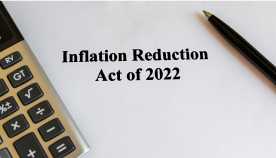AARP Eye Center
Background
For most consumers, electricity prices do not reflect the rise and fall in production costs. Costs fluctuate throughout the day as the demand for electricity changes. Electricity generated at peak periods is generally more expensive to produce. Typically, peak periods include early- and mid-afternoons on weekdays, summers, and times of shortages. However, the increase in the use of solar energy in some areas may be shifting peak periods to late afternoon and early evening. To meet energy demand during peak periods, utilities sometimes run power plants that are infrequently used, more polluting, or inefficient. They also sometimes import power. As a result, it is more expensive to provide electricity during peak usage.
There is widespread debate about whether residential customers should be required to have rates that reflect these varying costs. Two approaches are being implemented or discussed in many states. First, customers could be offered a program to reduce their usage during peak periods and given a credit on their bills for reducing usage when required. Second, customers could be charged more for using power during expensive hours under time-of-use or time-varying rates. Both programs seek to reduce usage during more expensive peak hours.
Some utilities have created what are called demand-response programs. They use incentives (“carrots”) or price variations (“sticks”) to encourage consumers to reduce electricity usage at certain times of day or times of the year. These reductions are often tied to times of peak demand. For example, customers might be offered a payment or credit on the bill to reduce usage during peak periods. In other programs, customers agree to let the utility control a major appliance. This could be an air-conditioner or electric water heater. It reduces demand on the system by briefly turning off the designated appliance during peak periods. Customers can override this function if necessary.
Time-varying rates refer to pricing structures that use “sticks” in the form of higher peak period prices to reduce energy usage during higher-priced times of day. Some utility companies have proposed using smart meters to charge different prices based on when the consumer uses the energy. Many consumer advocates are concerned about the potential for disparate impact of such a system. Time-varying rates might benefit high-income and high-usage customers who have more flexibility to alter usage patterns, invest in more efficient appliances, or who can pay the higher prices. However, they could lead to higher costs for customers who have limited options for reducing their demand to off-peak times. This includes those who already have lower usage and those who are more likely to be home during peak hours, including older adults. Time-varying rates might achieve their overall goal of reducing peak demand. But it may come at the expense of some potentially vulnerable consumers.
RATE PROGRAMS TO DECREASE ENERGY USE: Policy
RATE PROGRAMS TO DECREASE ENERGY USE: Policy
Time-varying rates and demand response
Policymakers should prohibit any time-of-use metering and billing program that is likely to:
- have an adverse impact on residential customers generally;
- have an adverse impact on customers who cannot reasonably shift usage, for example because of necessary medical equipment; or
- shift costs to those who use less than the average amount of electricity.
If such programs are allowed, they should require customers to opt in. Policymakers should prohibit any required or opt-out time-of-use metering and billing programs.
Policymakers should ensure that time-of-use metering and billing programs have an individualized consumer education component. This should include a projection of the impact on a customer’s bill based on historical usage and current prices.
Policymakers should ensure that any time-of-use (or related rate design) pilot program for residential customers includes and identifies customers with low incomes and measures the program’s impact on customers who do not or cannot take actions to avoid the higher peak-time prices.
For states considering the installation of smart meters and associated digital communications systems, policymakers should order a thorough analysis of such an effort. They should conduct contested proceedings to determine the costs and benefits to lower-income customers, customers at different usage levels and with varying patterns of usage, and residential customers in general.























































